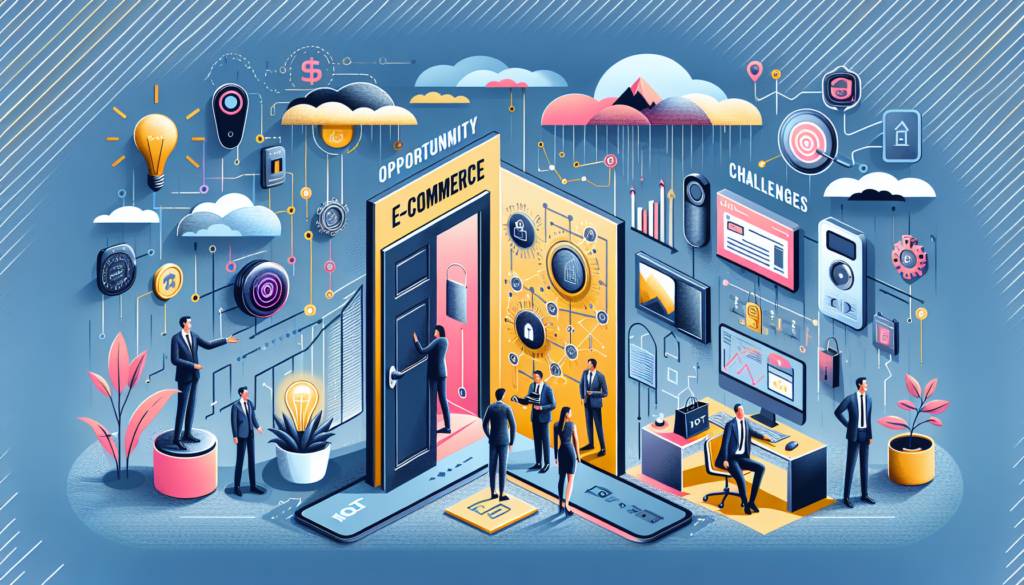In the confluence of e-commerce and the Internet of Things (IoT), dynamic opportunities arise that transform traditional business methods, simultaneously creating significant technological challenges for companies and consumers. The present dissertation aims to dissect the implications of this symbiosis within the modern commercial spectrum, attending from essential theoretical paradigms to the most recent technological advances, through significant case studies that illustrate current practices and future prospects.
Integration of IoT in E-commerce
Customer-Device Interaction: IoT has redefined the interaction between consumers and e-commerce platforms through smart devices that enable a personalized and proactive shopping experience. Machine learning and advanced analytics, applied to the data collected by these devices, facilitate the anticipation of consumer needs and preferences.
Logistics and Supply Chain Management: IoT systems offer comprehensive control of the supply chain in real time, from inventory management to shipment tracking. The implementation of RFID tags and GPS sensors ensures unprecedented visibility, optimizing effectiveness and reducing operational costs.
Payment and Security: Financial transactions become more secure and efficient with the use of IoT devices. Contactless payment systems, backed by technologies such as Near Field Communication (NFC) and tokenization, raise security standards and streamline the payment experience.
Technological Advances and Practical Applications
Predictive and Cognitive Capabilities: IoT systems now have the ability to predict consumption patterns and adapt to them with surprising accuracy, thanks to the incorporation of artificial intelligence algorithms and machine learning. In addition, cognitive technology in IoT allows devices to understand and learn from human interactions, taking personalization to the next level.
Advanced Automation: The integration of IoT technologies in e-commerce has triggered a wave of automation in distribution centers. Robots equipped with AI and IoT sensors perform packing and sorting tasks with greater efficiency and a lower margin of error.
Comparison with Previous Work
Comparison with previous research reveals an evolution from rudimentary applications of IoT, focused on specific tasks, to fully integrated systems that communicate with other emerging technologies. Contemporary studies emphasize the synergy between IoT and Big Data, highlighting the crucial role of analytics in real-time strategic decision-making.
Relevant Case Studies
Amazon, with its Amazon Go system, illustrates a practical implementation of IoT in retail e-commerce. It uses an array of sensors and computer vision algorithms to offer a cashier-less shopping experience. Another notable example is the company DHL, which has integrated IoT to optimize its logistics through the use of sensors and predictive analytics.
Challenges and Associated Issues
Security and Privacy Concerns
The protection of sensitive data is a predominant challenge in the integration of IoT in e-commerce. The proliferation of connected devices increases the attack surface, demanding more robust cybersecurity protocols and the implementation of stricter privacy standards.
Complexity in Implementation and Maintenance
The technical complexity and costs associated with deploying and maintaining advanced IoT solutions can represent significant barriers to widespread adoption, especially in small and medium-sized businesses.
Demands for Bandwidth and Infrastructure
The magnitude of data generated and transmitted by IoT devices requires robust network infrastructure and considerable bandwidth, whose absence can restrict the functionality and effectiveness of IoT solutions.
Future Projections and Potential Innovations
The horizon anticipates the proliferation of IoT devices with advanced energy autonomy and improved interconnectivity. The evolution of 5G networks and the development of Edge Computing technologies are projected as catalysts for the imminent growth of IoT in e-commerce.
The integration of IoT in e-commerce not only redraws business strategies but also redefines the consumer experience. The article provides a multidimensional look at this evolving reality, offering both an updated snapshot of its current state and a forecast of its future evolution, unraveling the intricacies of the relationship between IoT and e-commerce for an audience that constantly seeks to be at the forefront in an ever-changing technological field.

